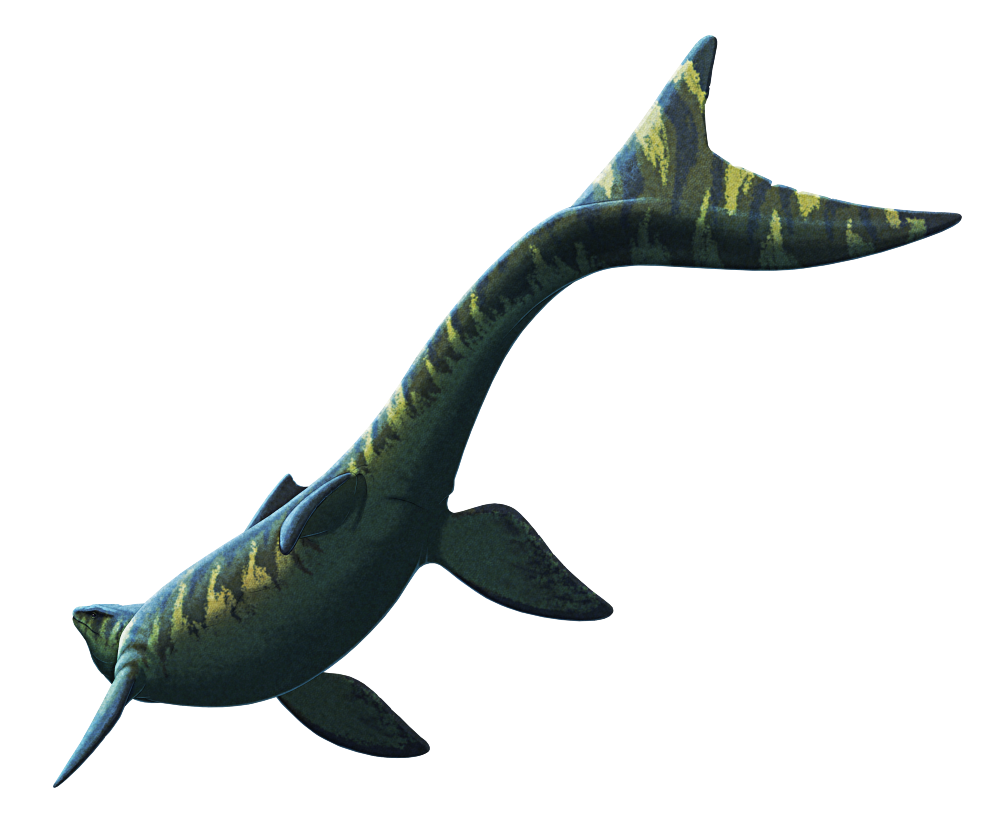Most mosasaurs all had very similar body plans: they were streamlined scaly monitor-lizard-like marine reptiles with four rounded paddle-shaped flippers, and many of them also had large shark-like tail fins.
But Megapterygius wakayamaensis here seems to have been doing something a bit different.
Living towards the end of the Cretaceous, about 72 million years ago, in the waters covering what is now western Japan, this mosasaur was around the size of a modern orca, roughly 6m long (~20′).
Unlike other known mosasaurs its flippers were huge, bigger than its own head and distinctively wing-shaped, with the back pair being larger than the front. This is an arrangement oddly reminiscent of the unrelated plesiosaurs, and may suggest a convergent sort of highly maneuverable “underwater flight” swimming ability – but unlike plesiosaurs Megapterygius also still had a powerful fluked tail, so how exactly all of its fins worked together is still unknown.
It’s also the first mosasaur known to preserve potential evidence of a dorsal fin. Some of its back vertebrae show a change in orientation at the point where a fin base would be expected to be, closely resembling the vertebrae shape of cetaceans like the modern harbor porpoise.

